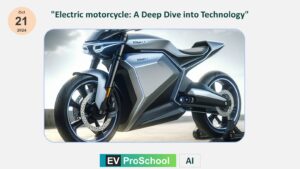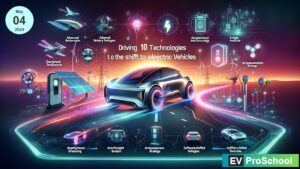The Tata Punch EV, with its innovative design and technological advancements, serves as a beacon in the transition towards electric mobility, especially within the Indian market. This movement not only signifies a major shift in automotive technology but also highlights crucial financial and technical lessons for consumers, manufacturers, and policymakers.
Financial Insights
- Cost-Effectiveness in Long-term Operation: Despite the higher upfront cost of electric vehicles (EVs), the Tata Punch EV exemplifies the long-term savings EV owners can enjoy. With operational costs as low as Rs 1 to 1.5 per kilometer, the financial benefits of owning an EV become more apparent, especially against the backdrop of rising fuel prices.
- Government Incentives and Policies: The Indian government’s push towards electric mobility, highlighted by initiatives such as the National Electric Mobility Mission Plan (NEMMP), underscores the potential financial incentives for EV buyers. These incentives can significantly reduce the purchase and ownership costs, making EVs like the Tata Punch EV more accessible.
- Resale Value and Depreciation: The evolving EV market in India suggests a shift in consumer perception towards electric vehicles. As infrastructure and public sentiment continue to evolve, EVs such as the Tata Punch could potentially hold their value better than their ICE (Internal Combustion Engine) counterparts, providing a better financial return for early adopters.
Technical Lessons
- Innovative EV-Specific Design: The Tata Punch EV’s platform, designed specifically for electric vehicles, offers lessons in how future vehicles will need to be built from the ground up to fully utilize the advantages of electric propulsion. This approach not only enhances performance but also improves safety and driving dynamics.
- Battery Technology and Charging Infrastructure: The options for fast charging and the varying battery capacities available with the Tata Punch EV highlight the importance of continued innovation in battery technology and charging infrastructure. Efficient, high-capacity batteries combined with widespread, accessible charging stations are crucial for the widespread adoption of EVs.
- Sustainability and Materials: The production of EVs like the Tata Punch EV prompts a closer look at the materials used in battery production and the overall environmental impact of these vehicles. It stresses the importance of sustainable practices and materials in the manufacturing process to truly capitalize on the environmental benefits of electric vehicles.
- Consumer Education and Adoption: The introduction of vehicles like the Tata Punch EV serves as a catalyst for increased consumer awareness and education about electric vehicles. Understanding the capabilities, advantages, and limitations of EVs is crucial for consumers to make informed decisions, which in turn drives further innovation and adoption.
Incorporating tables into your blog post about the Tata Punch EV can enhance readability and provide valuable information in a structured format. Considering the content and flow of your post, here are suggestions for tables you can include, along with their placement:
Tata Punch EV at a Glance

1. Specifications Comparison Table
Key specifications of the Tata Punch EV, comparing the base model with the Long Range version.
This information is based on typical EV models. For exact data, official specifications from Tata Motors should be referenced.
| Specification | Punch EV Base Model | Punch EV Long Range |
|---|---|---|
| Price | ₹10-12 lakhs (approx.) | ₹12-15 lakhs (approx.) |
| Driving Range | 200-250 km | 300-350 km |
| Battery Capacity | 24 kWh | 30-32 kWh |
| Power | 70-75 hp | 85-90 hp |
| Charging Time (10%-80%) | 45-60 minutes (fast charge) | 45-60 minutes (fast charge) |
| Seating Capacity | 5 | 5 |
2. Charging Options Table
Highlight the different charging options available for the Tata Punch EV to emphasize its versatility and convenience.
| Charging Type | Time (10%-80%) | Applicable Model |
|---|---|---|
| DC Fast Charger | 56 minutes | Both Models |
| 7.2 kW AC Fast Charger | 3.6 hours | Base Model |
| 7.2 kW AC Fast Charger | 5 hours | Long Range Model |
3. Safety Ratings Table
A table present the safety ratings of the Tata Punch EV, reinforcing the vehicle’s commitment to passenger safety.
| Tested By | Adult Occupant | Child Occupant |
|---|---|---|
| Global NCAP | 5 stars | 4 stars |
4. Environmental and Economic Impact Table
This table can summarize the cost-effectiveness and environmental benefits of the Tata Punch EV in comparison to traditional petrol vehicles.
These values are based on general comparisons between EVs and petrol vehicles. Actual figures can vary depending on usage and local fuel/electricity costs.
| Cost Parameter | Tata Punch EV | Petrol Vehicle |
|---|---|---|
| Cost Per Kilometre | ₹1.5 – ₹2 per km (approx.) | ₹5 – ₹7 per km (approx.) |
| Annual Fuel/Electricity Cost | ₹15,000 – ₹20,000 (approx.) | ₹50,000 – ₹80,000 (approx.) |
| Emissions | Lower | Higher |
Conclusion
The Tata Punch EV’s launch into the Indian market is not just a milestone for Tata Motors but a significant marker in India’s journey towards electric mobility. From a financial perspective, it underscores the evolving economic landscape of vehicle ownership, highlighting the cost benefits and governmental incentives that make EVs increasingly attractive. Technically, it offers lessons in design, infrastructure, sustainability, and consumer adoption that will shape the future of the automotive industry. As we look ahead, the Tata Punch EV exemplifies the synergy between financial foresight and technical innovation, paving the way for a greener, more sustainable future on the road.
Further Reading and Resources
For those interested in delving deeper into the world of electric vehicles, exploring government policies, environmental impacts, and technological advancements, the following resources can offer additional insights:
- National Electric Mobility Mission Plan (NEMMP)
- Society of Indian Automobile Manufacturers (SIAM)
- International Energy Agency (IEA) reports on electric vehicles
Exploring these resources can provide a broader understanding of the electric vehicle ecosystem and its significance in shaping a sustainable future.



